As an Amazon Associate I earn from qualifying purchases.
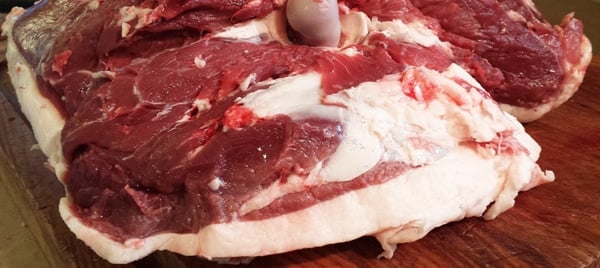
I’ve long been a proponent of using deer fat in cooking. In fact, it’s one of my more favorite hunting myths to puncture when I talk to other hunters about game cookery. After all, it just makes sense that the fat on venison would taste good, especially if you are hunting either in the Grain Belt or wherever there are a lot of acorns: Most of us like the taste of grain-fed beef, and acorn-fed pork is some of the finest in the world.
Still, the majority of sources on the subject will tell you to remove any and all fat from your deer, calling it gamy or “strong” or otherwise unpleasant. Even the normally sporty The L.L. Bean Game and Fish Cookbook, which I respect a lot, says venison fat is gnarly — but, oddly, that moose and caribou fat isn’t. Some critics skip the flavor aspect altogether and stress how quickly venison fat goes rancid, even in the freezer.
There has to be something to this, right?
Turns out, there is — to both sides of the deer fat debate. Here’s what I know about the science and composition of fat in venison, and hopefully this will help you decide whether you want to keep the fat on your deer or trim it off.
Let me start with the obvious: Deer, elk, antelope, caribou and moose are all separate critters, with different diets among species compounded by both regional differences — the menu for an Arizona cous deer is nothing like that for an Iowa white-tailed deer, for example — as well as individual differences; one buck may love acorns, while the one eating next to him prefers grass. Given this, any universal ideas about the flavor or composition of deer fat should be taken with a grain of salt. Being wild, variability is the name of the game.
Nevertheless, all our “deer” are cervids, ruminant cousins of sheep, goats and cattle. And ruminants tend to have a narrower range of flavor differences than do animals with a less intense digestive system and/or a wider diet.
Ruminants all eat grass, other plants, nuts, and only rarely animal protein; there’s that oft-quoted story about deer eating baby birds or eggs. Contrast that with ducks and bears and wild pigs, which can run the gamut from abominable to sublime depending on what they’d last been eating. A salmon-eating bear is foul, a berry-eating one fantastic. Deer are deer, with real but more subtle differences in flavor.
OK, you’ve shot a deer. Now what?
First off, when you gut the deer you will see a skein of lacy fat surrounding its entrails; this is caul fat, and it is fantastic for making crepinettes or British meatballs. (More on that in another post.) I save it, vacuum-sealing it and freezing it straight away.
Next you will often see a lot of fat around the kidneys as well as some stuck here and there within the gut cavity. This is suet. I tend to toss it. Why? Rule No. 1: Body cavity fat (suet) is always harder than that on working muscles. If you are a soap or candle maker, this stuff is golden. If you want to eat it, well, it’s really waxy and won’t melt until it hits about 120°F.
By comparison, rendered wild duck fat melts around 68°F. Some people like beef and lamb suet, but not me. Birds really love it, though, especially in winter. So if you live in a place with cold winters, save your deer suet for them.
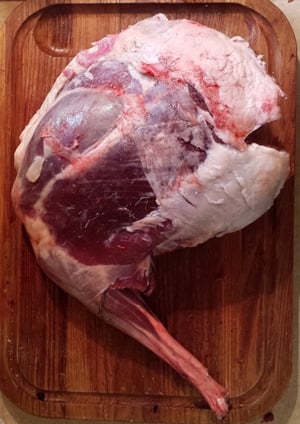
Question: Are you hanging your deer or not? This is a big one. If you intend on hanging your deer in the hide, you can still use the fat. Not a lot of people do this because it requires very cold temperatures. If, like most people, you hang your deer after it’s been skinned, you probably want to trim off at least top layer of fat. The reason why gets us into what venison fat is made of.
Good data is hard to find on this subject, but it does exist. I managed to read about a dozen scientific papers on venison fat — yeah, I know, light reading, right? — mostly from New Zealand, Scandinavia and Great Britain, although there were a few from the United States, too. They all come to the same conclusion about deer fat:
- It is high in Omega-3 fatty acids, due mostly to a diet of grasses.
- It may have the highest levels of stearic acid in any food animal, for reasons not entirely clear.
- Deer fat is more saturated than fat from beef, lamb or pork.
Saturated fat is bad, right? Yes, but the kind most people are talking about is palmitic and myristic acid, which are present in all ruminants, including deer. As it happens, stearic acid is an anomaly. Diets high in stearic acid actually decrease the “bad” cholesterol levels in people and may even increase the “good” cholesterol, too.
At the very least it’s cholesterol neutral. Beef has some stearic acid, lamb more. But you know what has even higher levels of it? Chocolate. Crazy, eh?
So, back to the question of hanging your deer. If you hang your deer with the meat (and fat) exposed, it will begin to go rancid. The reason has to due with temperatures above freezing, exposure to the air, which causes oxidation, and because fats high in omega-3 fatty acids tend to go rancid easier. This is why people say venison fat goes rancid quickly.
The quicker you can cool the deer carcass and the faster you can get the meat away from oxygen and into refrigeration, the better tasting the fat will be, and the longer it will keep in storage.
A word on taste. Flavor in deer fat is all about meat care, which we just discussed, and diet. A deer that had been pillaging an alfalfa field or a cornfield will have fat that tastes a lot like beef or lamb fat. A deer eking out a living in the Great Basin or the desert might not have any fat at all, and what fat there it may well taste unpleasant. How can you tell? Render some in a pan with a little water, and if it smells good it is good. Your nose doesn’t lie.
That said, fat is the primary carrier of individual flavor in animals, not lean meat. I can feed you a series of meats, and if they are all cooked the same way and are all devoid of fat, they’ll all taste similar. Color and texture are your only clues, and if you blindfold someone it will become virtually impossible to tell the difference. Don’t believe me? Try it on your friends. You’ll be surprised.
Venison fat has flavor. There, I said it. If you like the flavor of lamb or beef fat, you’ll like venison fat. Period. Others might find it too strong for them. And that’s fair, but I am betting it isn’t the flavor of the fat that’s got them. It’s the mouthfeel.
And this brings us to the final issue with deer fat: It can coat your mouth.
Blame that stearic acid. You know why you love chocolate so much? One big reason is because that lovely flavor coats your palate. Only when it’s deer fat the experience is something else entirely, and not altogether pleasant. A little is fine, largely because it carries that nice venison flavor.
But when I make sausages from 100 percent venison, they taste fantastic but I find I need to drink something acidic, like red wine, to cut that coating. Is it a stopper? No. But it’s something to be aware of.
So. Bottom line. If you want to eat your deer fat, I’d follow these guidelines:
- Save it from deer that had been eating nice grasses, grains or acorns. Remove it in deer from sagebrush or sketchy areas.
- Toss the suet unless you want to make candles, soap or feed the birds.
- Slice off any fat that was exposed to air after you’ve hung the carcass.
- Never use deer fat in dry-cured salami. Uncooked deer fat is nasty and chalky.
- Use deer fat sparingly in sausages and burger. A little adds a lot of flavor, a lot can give you that “coated mouth” thing
- Eat cuts with a lot of venison fat, burger or sausages made with venison fat within 3 to 6 months, as the fat will go rancid slowly even in the freezer; it’s a little like salmon fat, which, when thawed, gets that nasty smell we all hate…
- Venison fat crisped on a roast or steak is awesome. Period.
Hope this helps you out this deer season! What have your experiences been with deer fat?
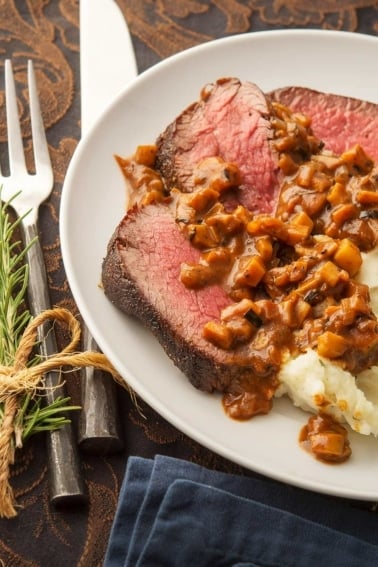

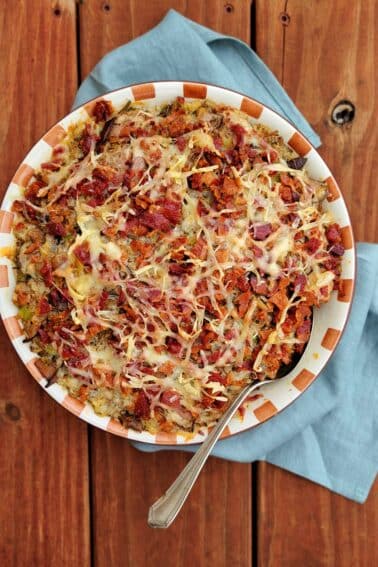
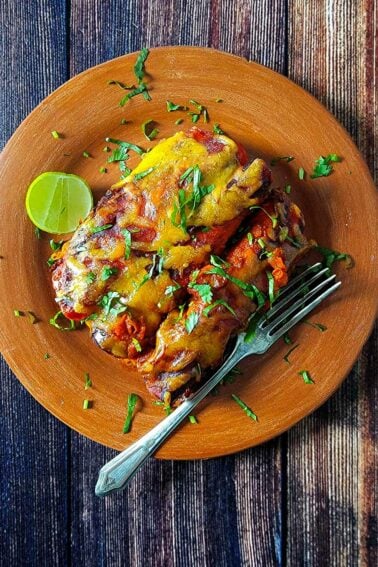
Hi. I have hunted and fished all my life, and at 70 am happy to be still going strong. I was out in the woods last weekend with my Son tending to tree stands with archery season here in Indiana starting next month. Anyway, I love your recipes and have made many of them. I own all your books (as gifts from my kids) and refer to them regularly. My question is a hard to answer one, I know, but how long will you keep and cook venison from a freezer. I think probably most hunters have some left over from one year to another and maybe another or two after that. Do you have any rules or practice guidelines that you can offer? For example, these could include how you prefer freezing meat or fish (i.e., vacuumed, butcher paper, fish in water, etc.) and also how you thaw it and how you determine when it has been in there too long. Is there an average or norm for you or do you just examine each piece and decide?
Thanks,
Chuck
Chuck: I always vacuum seal, and if the seal holds, the meat or fish will keep for more than a year. The low temps of a chest freezer help, too. A regular kitchen freezer isn’t cold enough. I’ve had venison keep 3 years this way.
Thank you for the great recipes! I had to chime in, because we have had some venison or fish (we do a couple of deep-sea fishing trips a year, hunt at least once) in our upright freezer for (missed them in the back, oops!!) 4 years. NO FREEZER BURN and the meat is fine. I double-wrap with butcher paper, and have had better luck with that than the vacuum seal.
We recently tried making Liverwurst with venison, I added some pork roast meat, with the fat, and it seemed to turn our just fine…95% properly seasoned. It was boiled in a (fabric?) casing and had the right consistency and all…we ate a lot of it, gave some to friends, but the last few rolls molded in the fridge. Disappointing, but I guess I should have tossed them into the freezer.
Just wanted to thank you for the good tips, recipes and the offer to assist when I have a question!!
Shirlee: Thanks for your tips, too! Good to know about the liverwurst.
This is great! Thanks for sharing. I am excited to experiment with the fat. I will say though, the health advice here is incorrect. Saturated fats are healthy (as is cholesterol) and even protective. It’s the polyunsaturated fats like vegetable oils that cause metabolic disfunction and cause heart disease. Given that deer is highest in steric acid, it makes sense to use this as a primary cooking oil. Sounds like it may be unappetizing to most people used to the fats in the standard American diet. I wonder how it would deep fry. Gonna try to make some sweet potatoes fries with my deer fat. Very fitting since we shot the ones that terrorized our sweet potato patch last year!
I put this to the test this season. Got a fine and fatty 6 point in early October during Georgia’s archery season. Kept the caul fat, cavity fat, and muscle fat (I got it confused and thought the cavity fat was supposed to be superior!). I froze the caul fat in balls for later use. I rendered the other two separately.
They are distinctly different in hardness, smell, flavor! I tested them my using them as the shortening for biscuits, I found them both edible, but, the muscle fat was better all around in both flavor and performance. Actually it was really ******* good man.
Will continue to keep the suet for my chickens or soap just like you said and keep my muscle fats to cut into biscuits, pastries, tamales, etc. while exploring other uses. Thanks for the guidance and push to try utilizing a little more!! You the man Hank.
Is there any way to get rid of the fat in ground meat if it is causing the coated mouth? I shot a deer in January and we made a lot of ground meat. We did not put any extra deer fat in it, but it is causing the coated mouth thing. I don’t want throw the meat, but we just don’t like the taste and feeling. Is there any way to get rid of that while cooking? Thank you for any help with this.
Chantele: Yes, sort of. What you do is put the ground meat in a pan and fry it to render the fat, maybe 2 pounds at a shot. Then move the meat to a strainer and let all the fat strain off. Discard any fat left in the pan, too. That should help a lot, although you will never get all of out. Hope that helps.
If you like chili, cook it in chili that had enough liquid so that the rendered fat rises to the top. Skim off the fat or chill it and break it off. Or do the same with soup recipes. Cook it in broth, remove the fat. Then make venison salad by adding celery onion and mayo or whatever you like to add to chicken salad. Venison salad rocks, but I prefer to make it with neck, shoulder or other tougher cuts that have been simmered for a long time in broth.
Hank, I usually butcher our deer but age is getting to my hands and we had part of our harvest processed. By the way the steaks are cut I have a feeling they didn’t trim off any fat. I’ve made 125 # of sausage, most with cure. And I think I have enough meat to make 100 # more. Sounds like I’m fighting the clock. Will I buy more time when I cook it in a summer sausage? By the way, we have a walk-in cooler so the deer are cooled quickly and we left the hide on the deer that were processed. Love your website and books!
Lou: Not sure what you are asking me. Will your deer fat go rancid? Yes, eventually. It takes six months to a year to get a detectable “off” flavor, and after a year, yeah, you should be able to taste something off, cooked or no.
Just reading your article here and I feel I’ve f’d up.
So I shot a fellow deer here in New Zealand and when I skinned it i found it to be really fatty. So I decided to cut off the skirts with all fat and mince it up to make salamis. But now this has put me off making them as you say it will be chalky.
Now I’ve got 3kg of really fatty mince, what would you recommend it do with it ?
Tom: Eat it. Seriously, start with some of your mince and cook it up. If you like it, proceed as normal. If not, use what you have and cut it with more venison and pork fat, to, basically, “dilute” the amount of deer fat in it. That’s worked for me.
Great information on deer fat. I tend to just trim all the fat from my venison because most people don’t like it. I like a little fat because I feel it gives you the venison flavor but I guess it’s an acquired taste and most just haven’t acquired it.
Beef fat off a steak melts in your mouth, I enjoy the taste…as the article says deer fat does not melt in your mouth…taken from deer around my homestead I do not enjoy the taste at all nor the texture…it’s just preference I guess. Venison roast (with 0 fat) cooked with a chunk of beef fat on top the best in my opinion.
The information in this article was very helpful. I do have one question. Is the fat located between the hide and muscle tissue located on top of the rump and also around the base of the tail also edible? I just finished skinning my deer and trimmed off the external fat and saved it. Never did this before in the past. But after watching numerous reality shows with subsistence living people, I thought I would step up my process to waste less.
Thanks in advance
Cindy: Yes, that fat is edible, but it’ll be just as tallowy (or not, depends on each deer) as the rest of it.
I’m pleased with this article’s details and sources. Thank you for the ideas and I appreciate the reader comments, as well.
We render our venison fat by using a pressure cooker from the bones. Once it cools, we take off the top layer and put it into tupperware for later use in dishes. Sauteed onions in deer fat! Yummy. As for the left over broth, we cook it down for bullion for rice or whatever.
Let nothing go to waste. It’s the best thing you can put in your body.
I take all the fat hunters dont want and render it into tallow to cook with and also to make pemmican works great for that definatly doesnt melt down as quick but it’s worth it for me anyway I use alot of tallow becuase of a zero carb diet
Greetings
Apologies for my poor English, and a thank you for this interesting article.
I got confused on the culture we have up here in Arctic circle about the moose preparation if it has always been unhealthy 😀
Is the notion of fat all the game’s fat or only the layer that is under the skin (and suet)?
We only cut away the most fat that are visible after the skinning procedure and throw it away, the fat stuck near the bone areas, shoulders and neck are spared; Carcasses hang usually a week most in a cold environment (a modern shed) and the pieces that naturally are fattier we spare them in soups and ground meat dishes.
Would you recommend trying to render down deer fat into tallow and keeping it in a jar the same way you can do with beef and pork? Would there be any special way to preserve it? Such as freezing it etc? I have found zero online about this subject.
Travis: yes, that works fine, but it’s a waxy fat I would not want to cook with. Great for waterproofing your boots though. And you could add a spoonful here and there to a dish. It freezes very well.
It said something about red wine being acidic enough to cut the fat coating to your mouth. Would boiling or marinating deer ribs in red wine be a reasonable task to prevent that coating. I have made deer ribs before but that waxy coating was too unbearable. The taste was good though.
Ethaniel: It might, but I’ve never tried it.
Hi
I just made Venison ribs last evening. Trim off excess fat, marinade 2 or 3 days. Smoke in offset smoker for several hours w water soaked fruit wood on hot charcoal for flavor. Transfer to oven for to finish + paint w bbq sauce for 45 min-1 hour. Must eat hot! This will eliminate the bad mouth feel. Hot, flavorful, sweet and smokey. If needed, put pack in to oven to warm. Eat quick or store in fridge and reheat tommarrow. Just make sure their hot.
Chris
I just rendered some fat off my chinese water deer. It pretty much turns into wax as soon as it comes off the heat and so I’m not sure I’ll be doing much cooking with it. Maybe I can crumble a fraction into burgers.
Paul: Good to know. If it is that waxy, probably best to skip it.
Suet, whether beef or venison, is an excellent alternative to cold butter when rubbed by hand into flour to make savory or sweet steamed puddings, boiled dumplings for stews, and for a more savory and flakey baked biscuit. Just replace the butter, ounce for ounce, with suet, and add a little more salt to make up for what would have been in the salted butter.
I often cook a well seasoned thick venison steak by searing it with some onion in the pan. Then added a generous splash of red wine to deglaze the pan and adding the steak back in with stock to braise until the desired level of doneness.
People who “don’t like venison” seem to like this. I wonder if it is the red wine changing the mouthfeel? I need to pay more attention when I prepare it next.
Fantastic take on deer fat- I agree completely and you were so succinct and informative! AND i didn’t know about the chalky flavor in salami. Thank you!